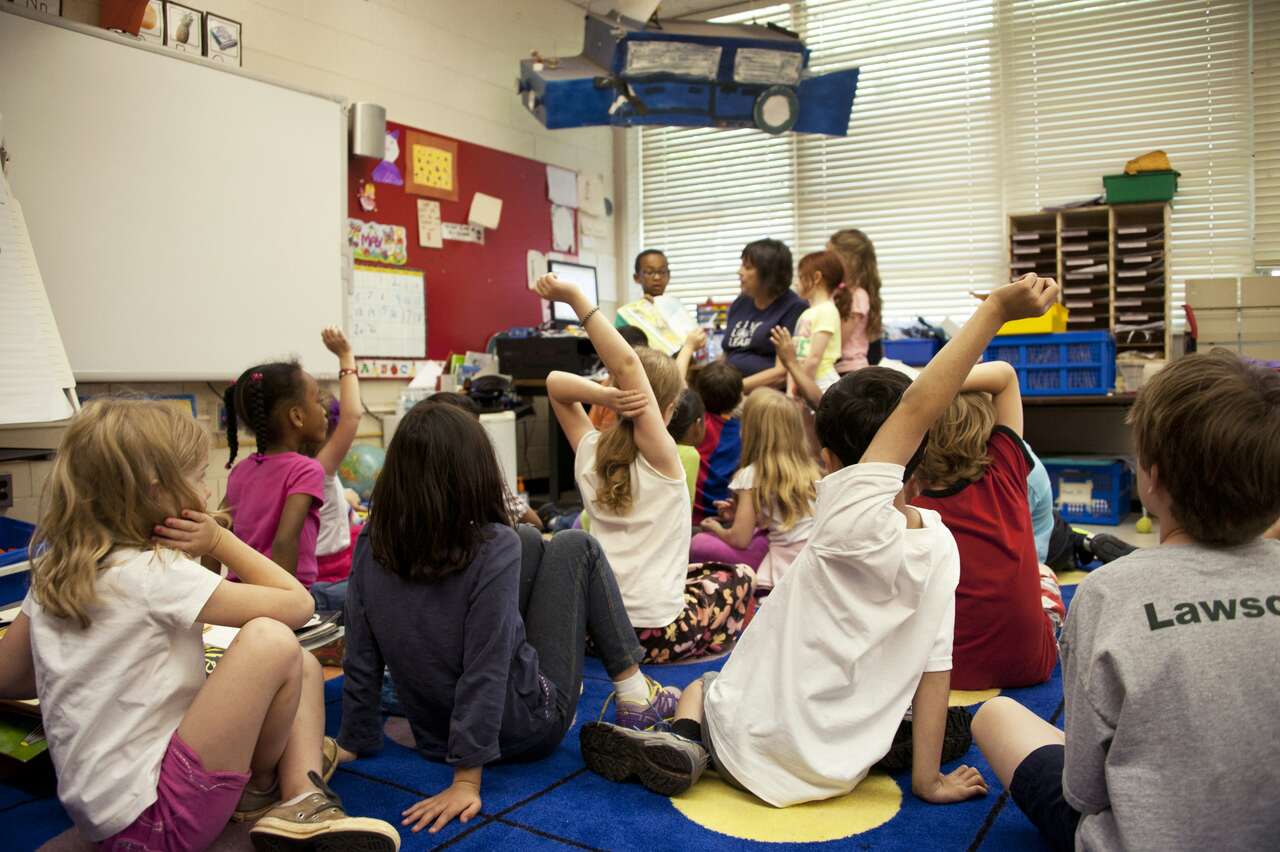
Spanish for Teachers: Essential Vocabulary for the Classroom
DATE:
Ever thought about how powerful it would be to speak directly to your Spanish-speaking students in their native language? With over 20 million students learning Spanish worldwide, it’s no wonder that “Spanish for Teachers” is becoming an essential skill. Let’s dive into some practical Spanish that will make your classroom a more inclusive and engaging place.
Common Spanish Classroom Phrases
Integrating common classroom phrases into your daily routine can enhance communication and support bilingual education. Here are some useful phrases not previously mentioned:
- Repitan después de mí (Repeat after me)
- Saquen una hoja de papel (Take out a sheet of paper)
- Pónganse en parejas (Pair up)
- Trabajen en grupo (Work in a group)
- Levanten la mano (Raise your hand)
- Guarden silencio (Be quiet)
- Pasen sus papeles al frente (Pass your papers to the front)
Basic Greetings and Introductions in Spanish
Formal vs. Informal Greetings
Understanding the difference between formal and informal greetings is crucial. Formal greetings are generally used with adults or in more professional settings, while informal greetings are suitable for students and peers.
Formal Greetings:
Understanding when to use formal greetings is essential for maintaining respect and professionalism in the classroom. When addressing adults or in more professional settings, start the day with a respectful “Buenos días” (Good morning). Similarly, you can use “Buenas tardes” (Good afternoon) or “Buenas noches” (Good evening) depending on the time of day.
Informal Greetings:
To create a more relaxed atmosphere with your students, informal greetings are more suitable. A friendly “Hola” (Hello) can set a welcoming tone, or you can ask “¿Qué tal?” (How’s it going?) to engage with them more casually.
Introducing Yourself
When introducing yourself, it’s important to be clear and respectful, whether it’s a formal or informal setting. You might say, “Me llamo [Your Name]” (My name is [Your Name]), and to clarify your role, add “Soy el/la profesor(a) de español” (I am the Spanish teacher). This helps establish your identity and role within the classroom or when meeting parents and other staff members.
These distinctions between formal and informal greetings and introductions help set the right tone for different interactions and build a positive, respectful classroom environment.
Classroom Commands in Spanish: Managing the Classroom
Attention Getters
Capturing the attention of a classroom can be challenging. Use phrases like “¡Escuchen!” (Listen!) and “¡Atención, por favor!” (Attention, please!) to focus your students.
Transitions
Transitioning smoothly between activities is key to effective classroom management. Guide your students with “Guarden sus cosas” (Put your things away) and “Formen un círculo” (Form a circle).
Asking Questions in Spanish: Engaging Students
Open-Ended Questions
Encouraging students to think critically can be achieved with open-ended questions. Ask, “¿Qué opinas de…?” (What do you think about…?), “¿Por qué crees que…?” (Why do you think…?), and “¿Qué has aprendido hoy?” (What have you learned today?) to engage their thoughts and reflections.
QUICK TIP…
The verb “aprender” means “to learn” in Spanish. Using questions like ¿Qué has aprendido hoy? helps to check for understanding and encourages students to reflect on their learning process.
Checking for Understanding
Ensuring students understand the material is crucial for effective learning. Periodically ask, “¿Entienden?” (Do you understand?) to gauge comprehension. Additionally, invite questions with “¿Tienen alguna pregunta?” (Do you have any questions?). This helps clarify any confusion and encourages student engagement.

Giving Instructions in Spanish: Clear and Concise Language
Step-by-Step Instructions
Clear and concise instructions are key to effective teaching. Break tasks into manageable steps, such as “Primero, abran sus libros en la página 10” (First, open your books to page 10) and “Luego, escriban sus nombres en la parte superior” (Then, write your names at the top). This approach helps students follow along easily.
Visual Aids
Using visual aids can enhance comprehension and engagement. When referring to visual aids, instruct students with “Miren la pizarra” (Look at the board) or “Vean la imagen” (Look at the picture). These phrases help direct their attention effectively.
Praise and Encouragement in Spanish: Motivating Students
Positive Reinforcement
Encouraging students is essential for maintaining motivation. Use phrases like “¡Buen trabajo!” (Good job!) and “¡Excelente!” (Excellent!) to praise your students and boost their confidence.
Recognizing Effort
Acknowledging effort, not just success, is crucial for fostering a growth mindset. Say “Veo que te has esforzado mucho” (I see that you have worked hard) and “¡Sigue así!” (Keep it up!) to recognize and encourage persistence.
DID YOU KNOW…?
Incorporating Classroom Spanish not only helps students learn but also supports bilingual education by creating a more inclusive environment.
Classroom Vocabulary for Teachers
Expanding your vocabulary is essential for effective classroom communication. Here’s a list of common classroom-related terms that will help you navigate daily activities and interactions with ease.
|
Spanish |
English |
|---|---|
|
El aula |
The classroom |
|
El escritorio |
The desk |
|
La pizarra |
Reason |
|
Por que |
The board |
|
El libro |
The book |
|
El cuaderno |
The notebook |
|
El lápiz |
The pencil |
|
La pluma / El bolígrafo |
The pen |
|
La tarea |
The homework |
|
La lección |
The lesson |
|
El examen |
The exam |
|
La pregunta |
The question |
|
La respuesta |
The answer |
|
El estudiante / Alumno |
The student |
|
El profesor / La profesora |
The teacher |
|
La clase |
The class |
|
La mochila |
The backpack |
QUICK TIP…
Regularly integrating these vocabulary terms into your daily classroom interactions can significantly improve your students’ understanding and usage of Spanish for education purposes.

The Benefits of Incorporating Spanish in the Classroom
Using Spanish in the classroom can transform the learning experience for both teachers and students. From basic greetings to specific commands and encouraging phrases, mastering Spanish for Teachers can make a significant difference in classroom management and student engagement.
Ready to take your Spanish skills to the next level? Start with a free 1:1 class or enjoy a free 7-day trial of our group classes with SpanishVIP. Dive into a richer, more connected teaching experience today!








